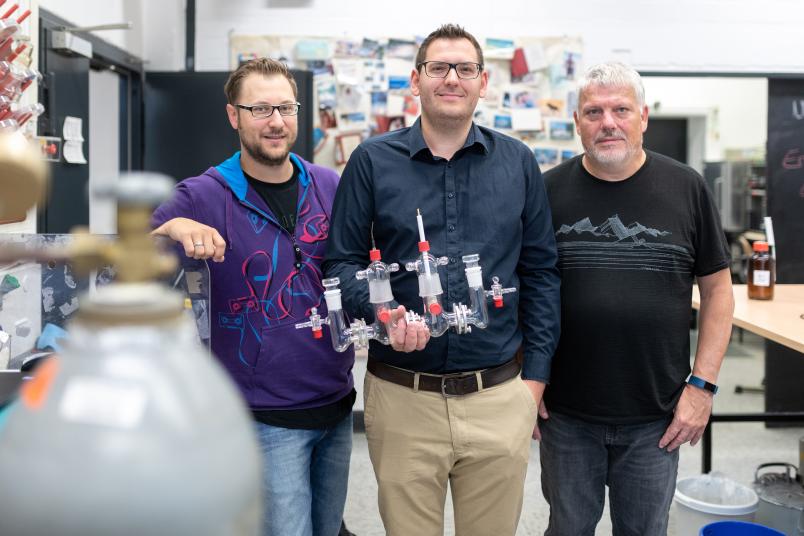
Chemistry
A protective shield for sensitive enzymes in biofuel cells
The mechanism protects sensitive enzymes from oxygen. It obtains its energy from sugar.
Enzymes as biocatalysts can work just as efficiently in fuel cells as expensive precious metal catalysts. However, the enzymes, known as hydrogenases, have so far not been suitable for technological applications because they are unstable when they come into contact with oxygen. RUB researchers and their colleagues have developed a new mechanism to protect the enzymes from oxygen. In the renowned journal Nature Communications from 10 September 2018, the team led by Dr. Adrian Ruff and Professor Wolfgang Schuhmann from the RUB Center for Electrochemical Sciences describes the results.
Functional biofuel cell built
The group built an oxygen removal system around the current-producing electrode. It contains two enzymes that use sugar to convert oxygen into water. The researchers also showed that they were able to use this protective mechanism to produce a functional biofuel cell that works with hydrogen and glucose as fuel.
Mechanism can be transferred to other enzymes
“We assume that the principle behind this protective shield mechanism can be transferred to any sensitive catalyst if the appropriate enzyme is selected that can catalyse the corresponding interception reaction,” says Wolfgang Schuhmann, head of the Center for Electrochemical Sciences and member of the cluster of excellence Ruhr Explores Solvation.

The researchers from Bochum cooperated with colleagues from the Max Planck Institute for Chemical Energy Conversion in Mülheim an der Ruhr and the University of Lisbon.